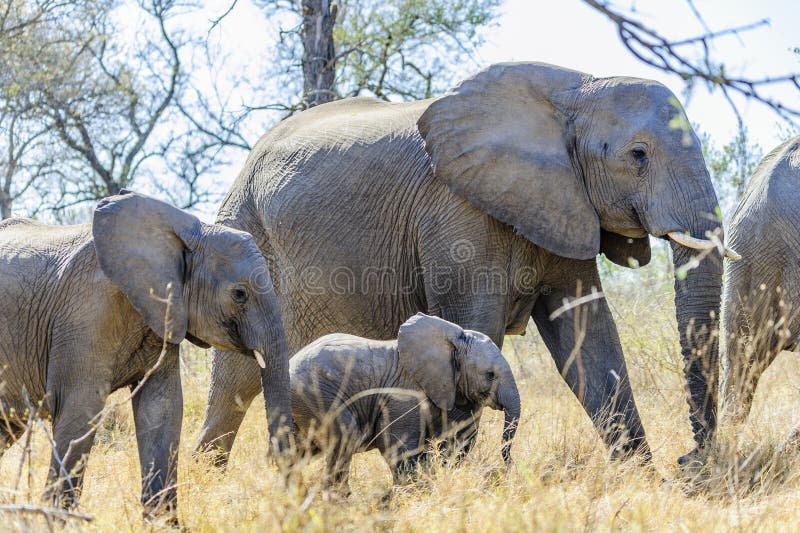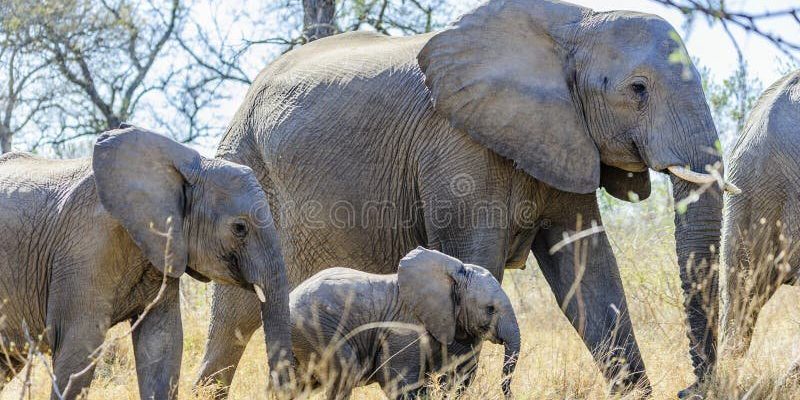
African bush elephants, specifically, exhibit fascinating behaviors that help their young thrive. Picture a close-knit family where everyone pitches in to support one another—this is exactly the kind of robust support system these elephants create. Let’s delve into the heartwarming ways they raise their young, forging bonds that last a lifetime.
The Family Structure of Elephants
Family life for African bush elephants is structured around matriarchs, usually the oldest and wisest female in the group. The matriarch leads her family—often consisting of her daughters, their calves, and sometimes a few other related females. You might be wondering why the oldest female is the leader. It’s simple: she’s seen more seasons and experienced more challenges, making her an invaluable resource for the group.
Within these family units, elephants form tight bonds. Sisters, aunts, and cousins help care for the young, teaching them everything from foraging for food to how to communicate with one another. Elephants are social animals; they thrive on interactions with their family and community. This closeness is not just for nurturing but also for protection—together, they can fend off predators or guide the young through tricky terrains.
Interestingly, male elephants don’t stick around after they reach maturity. Once they leave their maternal groups around 10-15 years old, they often join bachelor herds. This leaves the females to continue raising the young, ensuring that their social structure remains strong and supportive.
Pregnancy and Birth: A Long Commitment
When it comes to raising young, the journey begins long before the calf is even born. African bush elephants have one of the longest gestation periods in the animal kingdom, lasting about 22 months! That’s nearly two years of nurturing a developing baby inside. You can think of it as a long commitment where the mother prepares for the arrival of her little one.
Once the time comes, the birth process usually takes place in safe, secluded areas. Other female elephants often attend the birth, creating a circle of support around the mother. After the calf is born, the first moments are crucial. Newborn elephants are wobbly on their feet but have to stand and walk within a few hours to keep up with the herd. This might sound tough, but it’s essential for the calf’s survival.
The bond between the mother and calf is downright heartwarming. They communicate through touch and vocalizations, developing a connection that nurtures trust and love. The mother is attentive, providing milk and protection, while the rest of the family keeps a watchful eye.
Milk and Nutrition: Growing Up Strong
As the calf grows, its diet will evolve. In the early days, breast milk is the primary source of nutrition, packed with everything the young one needs to grow healthy and strong. It’s pretty impressive how elephants can produce enough milk to feed their calves, considering how much a baby elephant can weigh—up to 250 pounds at birth!
After about six months, the calf begins to explore solid foods, often mimicking adults by trying leaves, grasses, and fruits. Here’s the thing: foraging isn’t just about satisfying hunger; it’s a learning experience. The young ones watch their mothers and other adults, learning which plants are safe to eat and where to find water.
The communal aspect of feeding is essential, too. Other female relatives help the calf by showing it where to find food and teaching it how to dig for roots or strip bark from trees. This sharing of knowledge ensures that the younger elephants grow up with the skills they need to survive independently.
Learning Through Play
You might think that growing up in the wild would be all about serious business, but elephants, especially the young ones, love to play! Playtime is crucial for their development. It might look like frolicking in the mud, chasing after each other, or practicing their trunk movements. This isn’t just for fun; these activities help calves develop critical motor skills and social behaviors.
During play, elephants learn how to communicate and navigate their relationships within the herd. They practice using their trunks, which are essential tools for eating, drinking, and socializing. Just like how children learn through games and interactions with other kids, elephant calves engage in social play, fostering bonds and understanding their place within the family structure.
Watching these moments can be delightful. Young elephants often take turns “stealing” each other’s food or playfully pushing each other over, all while their elders keep a watchful eye, stepping in when things get too rough. It’s a beautiful blend of nurturing, education, and just plain joy.
Protection and Guidance: The Role of the Matriarch
The matriarch plays a vital role in nurturing and protecting the young elephants. With her experience, she knows the best routes to water holes and feeding grounds, especially during dry seasons. Her wisdom ensures that the family stays safe and well-fed, which is critical for the calves’ survival.
When danger approaches—say, a lion or a human intrusion—the matriarch will position herself between the young and the threat, showcasing fierce protective instincts. The rest of the herd quickly rallies together, forming a defensive barrier. This instinct to protect is not just about immediate threats; it’s also about creating a safe environment for young elephants to explore and learn.
You might be surprised to learn that elephants have strong emotional bonds and can hold onto memories. This ability is vital for survival, as remembering past dangers helps them navigate their environment better. The lessons learned from the matriarch guide the young into adulthood, shaping how they interact with their world.
Growing Up: Transition to Independence
As calves grow, they gradually transition from dependence on their mothers to independence. This change usually happens around 10-15 years old, when they start to explore the world beyond their family unit. By this age, they’ve learned essential survival skills and social behaviors, setting them on a path to becoming fully-fledged adults.
While young males usually leave the herd to form their own bachelor groups, females often stay close to their maternal family. This continuity is key for maintaining the strength and bond of the herd. Young females learn from their mothers and aunts, actively participating in raising future generations.
It’s a remarkable journey—one that’s filled with love, challenges, and the collective effort of a family working together. As these young elephants grow, they carry the lessons learned from their elders, ensuring the survival of their species for generations to come.
Raising young in the wild is a complex, beautiful process that showcases the nurturing instincts of African bush elephants. From the matriarch’s guidance to the playful interactions of calves, each aspect contributes to the survival and social structure of their family units. Honestly, observing these magnificent creatures in their natural habitat can be a humbling experience, revealing the delicacy and strength of family ties.
As we learn more about how elephants raise their young, it’s clear that they mirror many of our values around family, community, and learning. Their intricate social fabric teaches us the importance of connection and support, reminding us that we all play a role in nurturing the next generation. So, the next time you think of elephants, remember the incredible journey each calf takes, surrounded by love and guidance from their family.

